Discover the primary distinctions between brick masonry vs stone masonry in construction. Gain insights into their strength, varieties, bonding techniques, and testing procedures to select the most suitable option for your project.
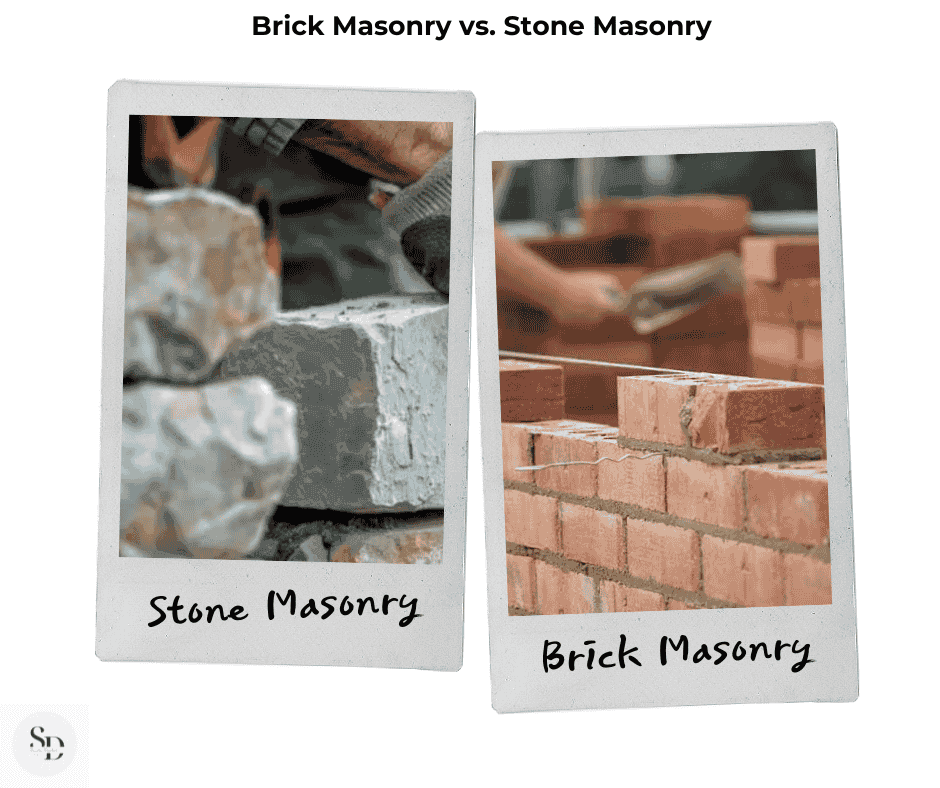
Table of Contents
Introduction
Masonry represents one of the earliest construction techniques utilized to create durable and robust structures. It encompasses two main types: brick masonry and stone masonry. Both have been employed for generations in residences, buildings, and monuments. How do these methods stack up against each other? Which one suits contemporary construction best?
Brick masonry involves the arrangement of bricks in specific patterns, bound together with mortar. Its popularity stems from the fact that bricks are light, manageable, and cost-effective. This technique is prevalent in homes, walls, and commercial properties. The consistent size and shape of bricks lead to quicker and more efficient construction.
Conversely, stone masonry employs natural stones such as granite, limestone, and sandstone. While offering greater strength and longevity than brick masonry, it tends to be heavier and pricier. Stone masonry is commonly found in bridges, monuments, and historical structures due to its robust nature and visual appeal.
This article will evaluate brick masonry and stone masonry by examining their types, strength, bonding methods, and testing techniques. This analysis will assist you in understanding their distinctions and determining the best choice for your construction project.
What is Brick?
A brick is a rectangular block composed of clay, sand, and water, hardened either through sun-drying or firing in a kiln. Due to their lightweight nature, affordability, and manageable size, bricks are frequently used in construction. They offer excellent thermal insulation and provide structural strength.
What is Stone?
A stone is a naturally occurring, solid material formed from minerals. Extracted from quarries, it is valued in construction for its durability, strength, and resistance to environmental wear. Common types of stones used in building include granite, limestone, sandstone, and marble.
What is Brick Masonry?
Brick masonry is a construction technique where bricks are systematically arranged and adhered using mortar, comprised of a mixture of cement, sand, and water. This method is widely employed for creating walls, columns, and foundations, appreciated for its strength, stability, and uniformity.
What is Stone Masonry?
Stone masonry is a construction method that involves arranging natural stones bonded together with mortar. It is favored for creating resilient, durable, and weatherproof structures like bridges, monuments, and historic buildings. This type of masonry necessitates skilled labor due to the varying shapes of stones.
Classification of Bricks
Bricks can be categorized by their quality, material composition, and manufacturing techniques
- Based on Quality
- First-Class Bricks: Uniform shape, smooth surface, well-fired, and high strength.
- Second-Class Bricks: Slightly irregular shape, used for interior walls.
- Third-Class Bricks: Rough surface, under-burnt or over-burnt, suitable for temporary structures.
- Fourth-Class Bricks: Over-burnt and fragile, used as aggregates in concrete.
- Based on Composition
- Burnt Clay Bricks: Traditional bricks created by firing clay in kilns.
- Fly Ash Bricks: Made from fly ash and cement, eco-friendly and lightweight.
- Concrete Bricks: Composed of cement and aggregates, commonly used in modern construction.
- Sand Lime Bricks: Constructed from sand and lime, known for their strength and smooth finish.
- Engineering Bricks: High-density bricks utilized for damp-proof and subterranean applications.
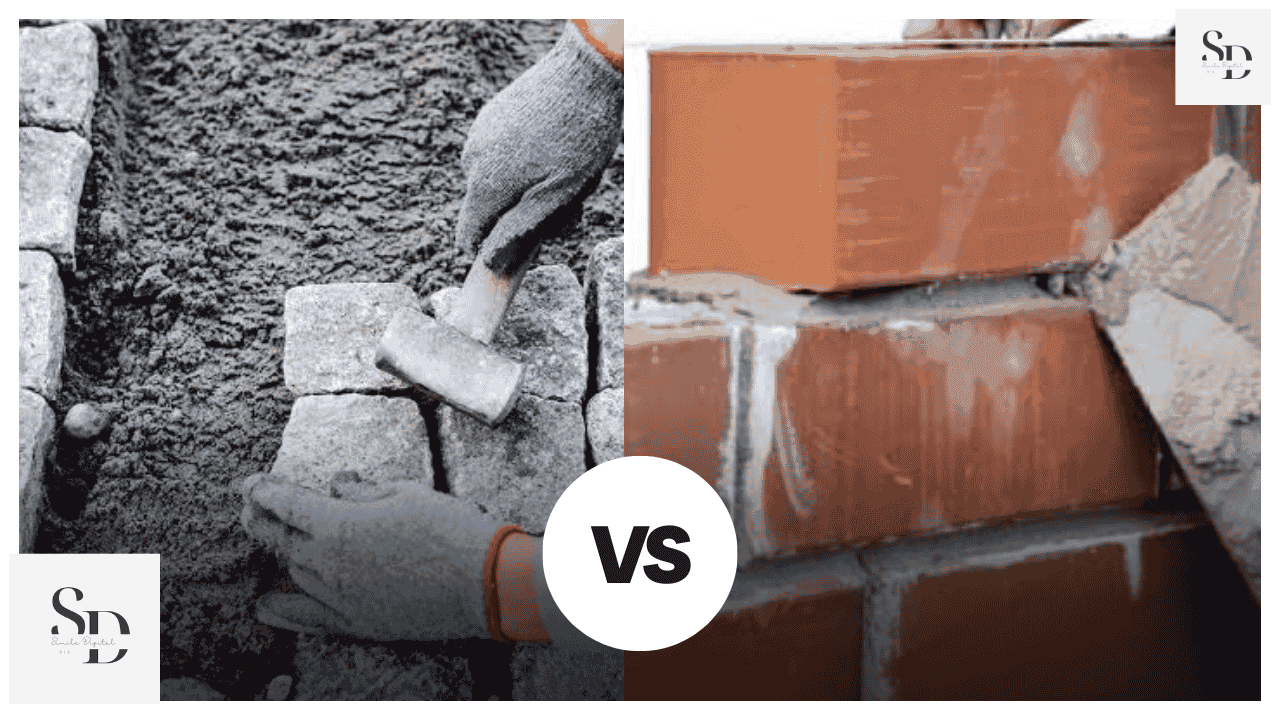
Classification of Stones
Stones are grouped based on their origin and characteristics
- Based on Geological Origin
- Igneous Rocks: Formed from solidified magma (e.g., granite, basalt).
- Sedimentary Rocks: Created from sediment accumulation (e.g., limestone, sandstone).
- Metamorphic Rocks: Developed under heat and pressure (e.g., marble, slate).
- Based on Physical Properties
- Hard Stones: Granite, basalt – suitable for infrastructure like bridges and roads.
- Soft Stones: Limestone, sandstone – favored for sculptures and architecture.
- Porous Stones: Laterite – tends to absorb water, used in humid environments.
Classification of Brick Masonry
Brick masonry can be classified according to its bonding methods and mortar type
- English Bond: Alternating courses of headers and stretchers, offering strength and durability.
- Flemish Bond: Alternating headers and stretchers within the same course, visually appealing.
- Rat-Trap Bond: Edged bricks creating hollow spaces for enhanced insulation.
- Reinforced Brick Masonry: Steel reinforcements included to enhance strength.
- Hollow Brick Masonry: Bricks featuring cavities to decrease weight and improve insulation.
Classification of Stone Masonry
Stone masonry is classified according to how the stones are dressed (shaped) and arranged
- Rubble Masonry: Involves irregularly shaped stones, commonly used for walls.
- Random Rubble: Stones placed in a random manner for a rough look.
- Coursed Rubble: Stones laid in organized, uniform layers.
- Ashlar Masonry: Requires finely dressed stones for a tidy and elegant appearance.
- Ashlar Fine: Very smooth stones with precise cuts.
- Ashlar Rough: Stones roughly dressed but organized in uniform layers.
Brick Masonry vs. Stone Masonry
Brick masonry and stone masonry represent two prevalent construction techniques, each with distinct attributes making them appropriate for different uses. Below is a comprehensive comparison based on several technical, economic, and functional factors.
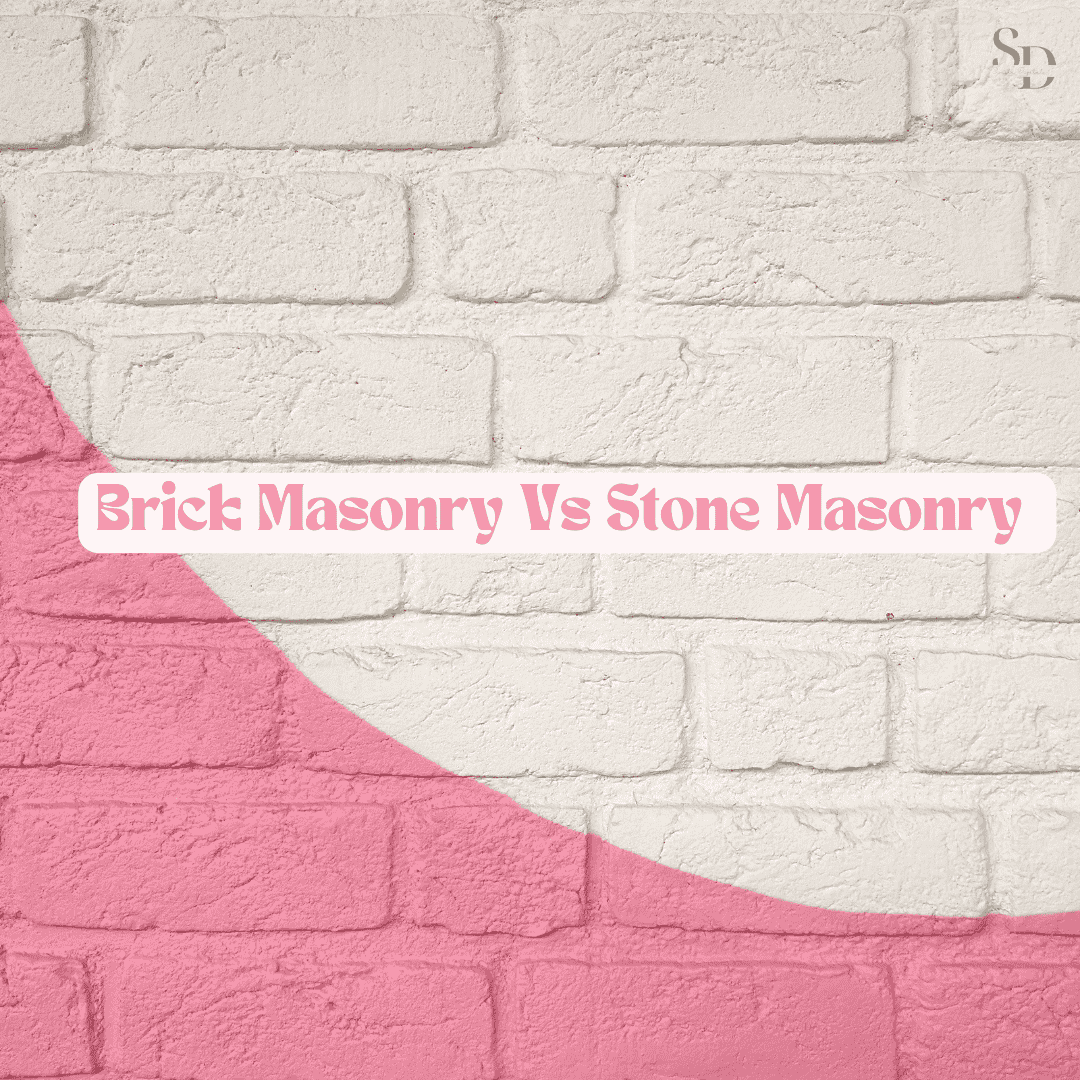
- Strength and Durability
- Brick Masonry: Lacks the compressive strength of stone (3.5 – 10 MPa for common bricks), suitable for low-rise structures and partitions but not heavy-load applications.
- Stone Masonry: Natural stones, such as granite and basalt, deliver impressive compressive strength (100 – 250 MPa), ideal for high-load projects like bridges and multi-story buildings. It remains durable for centuries with minimal wear.
- Cost of Construction
- Brick Masonry: Cost-effective, readily available, and lower material and labor expenses. Manufacturing and transport costs are also reduced, making it suitable for mass housing.
- Stone Masonry: Priced higher due to extraction, dressing, and transportation requirements. Skilled labor is essential for shaping and installing stone, raising overall construction costs.
- Construction Time
- Brick Masonry: Uniformity in size and shape accelerates building, leading to quicker project completions.
- Stone Masonry: Requires extra time for cutting and fitting irregular stones, resulting in a longer construction timeline.
- Workability and Ease of Handling
- Brick Masonry: Lightweight (1.5 – 2.5 kg per brick) makes bricks easy to handle and shape without specialized tools, enhancing workability.
- Stone Masonry: Heavy stones necessitate specialized equipment for cutting and shaping, complicating transport and handling.
- Load-Bearing Capacity
- Brick Masonry: Its lower strength limits use to low-rise residential and commercial buildings, unsuitable for high-load structures.
- Stone Masonry: The high compressive strength of stones makes it appropriate for significant load-bearing applications, such as bridges and fortifications.
- Thermal Insulation
- Brick Masonry: Offers better thermal insulation, aiding in regulating indoor temperatures and promoting energy efficiency.
- Stone Masonry: Stones can retain heat and release it slowly, making them less insulating. Buildings with stone walls may feel colder in winter and warmer in summer.
- Water Absorption and Moisture Resistance
- Brick Masonry: High porosity can lead to rapid water absorption, increasing dampness risks if not properly treated.
- Stone Masonry: Stones like granite and basalt resist moisture, although porous stones like sandstone may absorb water.
- Aesthetic Appeal and Architectural Use
- Brick Masonry: Uniformity lends itself to modern design, while varied colored bricks can enhance visual interest.
- Stone Masonry: Offers a natural and sophisticated appearance, making it excellent for historical sites and upscale construction.
- Fire Resistance
- Brick Masonry: Highly fire-resistant, making it ideal for residential and industrial settings where fire safety is a priority.
- Stone Masonry: While also fire-resistant, some types like limestone and sandstone may crack under intense heat.
- Earthquake Resistance
- Brick Masonry: Its lightweight characteristic contributes to flexibility, enabling better shock absorption and earthquake resistance.
- Stone Masonry: Being heavy and rigid, stone structures are less resistant to earthquakes; reinforcement is often needed in seismic regions.
- Environmental Impact and Sustainability
- Brick Masonry: Traditional brick production emits carbon due to clay burning; however, options like fly ash and concrete bricks offer greener alternatives.
- Stone Masonry: Minimal processing makes natural stones eco-friendly; however, quarrying can adversely impact landscapes.
- Maintenance Requirements
- Brick Masonry: Needs regular plastering and painting to prevent moisture damage and surface issues. Cracks may appear over time.
- Stone Masonry: With its superior durability and weather resistance, stone masonry demands minimal upkeep.
- Bonding and Adhesion with Mortar
- Brick Masonry: Rough brick surfaces enhance adhesion with mortar, leading to robust bonding.
- Stone Masonry: Some stones (e.g., granite) have smooth surfaces that may weaken mortar adhesion, necessitating alternative bonding methods.
- Flexibility in Design and Shape
- Brick Masonry: Easily shaped and cut, allowing for greater design flexibility in constructing arches and decorative features.
- Stone Masonry: Shaping stones is challenging and requires skilled labor, making intricate designs more complex to achieve.
- Suitability for Different Structures
- Brick Masonry: Common in residential homes, offices, schools, and small businesses.
- Stone Masonry: Typically used in monuments, temples, bridges, historic buildings, and significant infrastructure projects.
- Waste Generation and Reusability
- Brick Masonry: Broken bricks can create waste; however, they’re often reused in landfills or as subgrade material.
- Stone Masonry: Stones are generally more reusable, as they can be cut and reshaped for future uses.
- Resistance to Biological Growth
- Brick Masonry: Due to porosity, bricks can develop fungi and moss when exposed to wet conditions.
- Stone Masonry: Hard stones like granite and basalt resist biological growth, while porous varieties may still accumulate moss.
- Sound Insulation
- Brick Masonry: Provides moderate sound insulation, making it effective for residential areas.
- Stone Masonry: Thick stone walls excel in sound insulation, making them suitable for historical structures and luxury dwellings.
- Weathering Resistance
- Brick Masonry: Bricks degrade over time due to exposure to rain, wind, and temperature fluctuations.
- Stone Masonry: Stones are highly resistant to weathering, enduring for centuries with minimal degradation.
- Local Availability
- Brick Masonry: Can generally be manufactured locally, reducing transport expenses.
- Stone Masonry: High-quality stones might not be readily available everywhere, often necessitating transportation from distant quarries, raising costs.
Physical Properties of Brick and Stone
- Specific Gravity
- Brick: 1.6 – 2.0
- Stone: 2.5 – 3.0 (varies by type)
- Density (kg/m³)
- Brick: 1600 – 1920 kg/m³
- Stone: 2600 – 2800 kg/m³ (depends on the stone type)
Standard Brick Size (as per IS Code)
- Modular Brick (IS 1077:1992): 190 mm × 90 mm × 90 mm
- Standard Brick (Non-Modular): 230 mm × 110 mm × 75 mm
Indian Standard (IS) Codes for Brick and Stone
For Bricks
- IS 1077:1992 – Common Burnt Clay Bricks
- IS 3495:1992 (Parts 1 to 4) – Methods of Tests on Bricks
- IS 5454:1976 – Sampling of Clay Bricks
- IS 2212:1991 – Brickwork Code of Practice
For Stones
- IS 1121:1974 (Parts 1 to 4) – Methods of Testing for Stones
- IS 1597:1992 (Parts 1 & 2) – Code of Practice for Stone Masonry
- IS 3620:1979 – Standard for Sandstone
- IS 3316:1974 – Standard for Granite Blocks
Tests for Bricks and Stones (Field vs Lab)
Tests on Bricks
Field Tests
- Visual Inspection Test
- Soundness Test (by striking bricks together)
- Water Absorption Test (by immersion)
- Hardness Test (by scratching)
- Shape & Size Test (dimensions measurement)
Laboratory Tests
- Compressive Strength Test
- Water Absorption Test
- Efflorescence Test
- Impact Test
- Warpage Test
Tests on Stones
Field Tests
- Appearance Test
- Hardness Test (by scratching with steel)
- Water Absorption Test (dipping method)
- Acid Test (for chemical resistance)
- Sound Test (by hitting stones together)
Laboratory Tests
- Crushing Strength Test
- Water Absorption Test
- Porosity Test
- Impact Test
- Attrition Test
- Acid Resistance Test
- Specific Gravity Test
Advantages and Disadvantages of Brick Masonry vs Stone Masonry
Advantages of Brick Masonry
- Cost-effective – Bricks are generally cheaper and readily available.
- Lightweight – Easier handling and transport due to lower weight.
- Workable – Simple to cut and shape, minimizing labor costs.
- Consistent Size – Results in tidy construction and less waste.
- Good Thermal Insulation – Aids in maintaining comfortable indoor temperatures.
- Quick Construction – Uniformity allows for faster wall erection.
- Fire Resistant – Non-combustible, enhancing safety.
- Eco-Friendly Options – Availability of sustainable alternatives like fly ash bricks.
Disadvantages of Brick Masonry
- Lower Strength – Compared to stone, bricks have reduced compressive capacity.
- High Water Absorption – Their porous nature can lead to moisture problems.
- Not for Heavy Loads – Inadequate for tall or heavily loaded structures.
- Limited Weather Resistance – Continuous exposure can damage bricks.
- Aesthetic Limitations – Lacks the natural beauty associated with stone masonry.
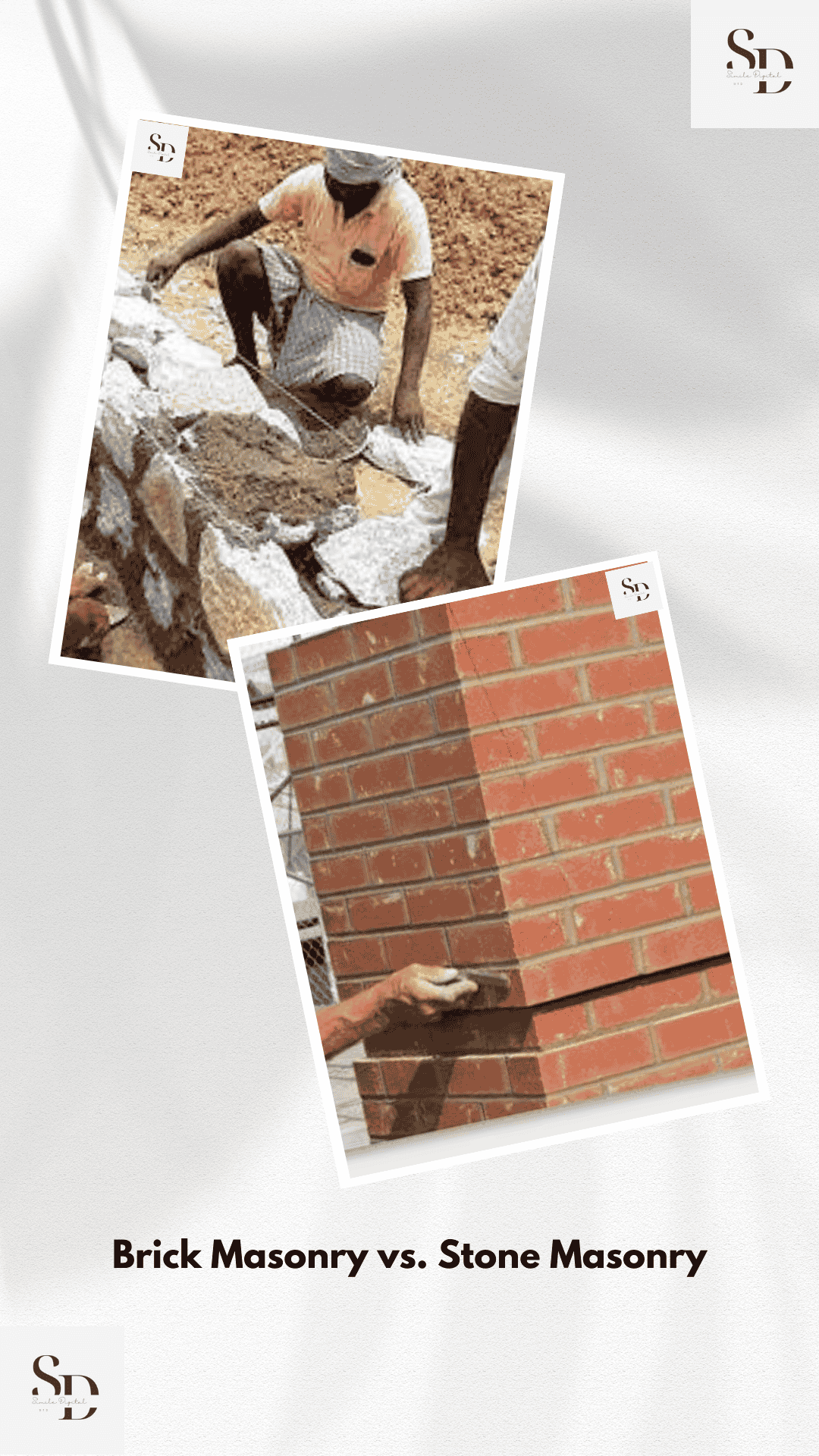
Advantages of Stone Masonry
- High Strength – Stones provide excellent compressive strength for load-bearing structures.
- Extremely Durable – Can last for centuries with little wear.
- Weather Resistant – Endures severe environmental conditions, including rain and wind.
- Resistant to Fire and Pests – Stones are unaffected by fire or infestations.
- Visual Appeal – Natural stone imparts a classic and sophisticated aesthetic.
- Low Maintenance – Requires little upkeep if built correctly.
- Environmentally Friendly – Minimal processing needed makes stones a sustainable choice.
Disadvantages of Stone Masonry
- Higher Costs – Stones generally incur greater expenses due to extraction and transport.
- Heavier – Requires stronger foundations, possibly increasing costs.
- Challenging to Work With – Shaping stones needs skilled labor and specialized tools.
- Longer Construction Time – Stone masonry often takes more time than brick.
- Design Limitations – Irregular shapes complicate intricate architectural designs.
- Limited Local Availability – Quality stones aren’t always locally sourced, increasing expenses.
Cement Mortar for Brick Masonry and Stone Masonry
What is Cement Mortar?
Cement mortar is a combination of cement, sand, and water that serves as a binding agent in masonry construction. It fills voids between bricks or stones to enhance strength, stability, and longevity.
Cement Mortar Ratios for Brick Masonry
- Load-Bearing Walls: 1:3 to 1:6 (Cement:Sand)
- Non-Load-Bearing Walls: 1:4 to 1:6
- Plastering Brick Walls: 1:4 to 1:6
- Pointing in Brick Joints: 1:2 to 1:3
Cement Mortar Ratios for Stone Masonry
Dry Stone Masonry: No mortar is employed; stones are positioned without binding material.
Rubble & Ashlar Masonry: 1:4 to 1:6
High-Strength Structures: 1:3 to 1:4
Plastering Stone Walls: 1:4 to 1:6
Pointing in Stone Joints: 1:2 to 1:3
Conclusion
Brick masonry and stone masonry are two fundamental building techniques that have been used for centuries. Both methods have their unique strengths and applications. Brick masonry is preferred for its affordability, ease of use, and better insulation properties, making it ideal for residential, commercial, and industrial buildings. On the other hand, stone masonry is known for its exceptional durability, strength, and aesthetic appeal, making it the best choice for historical buildings, fortifications, and heavy-load structures.
While brick masonry is lightweight and quicker to construct, it requires regular maintenance to prevent moisture damage. Stone masonry, although highly durable, is expensive and time-consuming to build due to the need for skilled labor and special tools.
The choice between the two depends on various factors such as budget, climate, structural requirements, and aesthetic preferences. For projects requiring quick and cost-effective solutions, brick masonry is the better option. However, for long-term durability and architectural beauty, stone masonry is unmatched.
Understanding the advantages, limitations, and best applications of both techniques allows builders, engineers, and architects to make informed decisions, ensuring strong, durable, and efficient structures that stand the test of time.
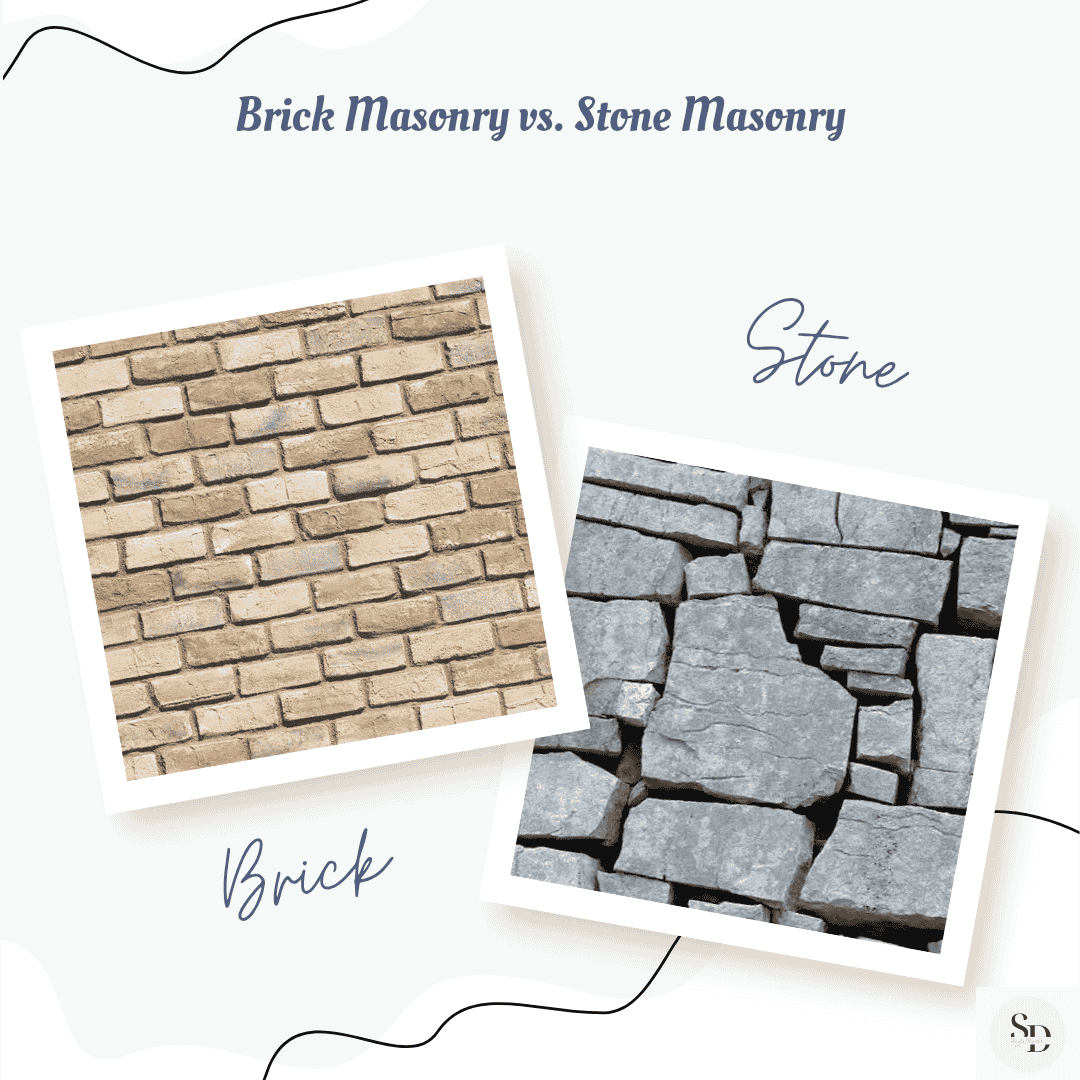
Best Books on Brick Masonry and Stone Masonry
1. Building Materials and Construction – S.K. Duggal
Covers masonry materials, construction techniques, and strength properties.
2. Masonry Structural Design – Richard E. Klingner
A detailed guide to masonry structures, their design principles, and engineering aspects.
Frequently Asked Questions (FAQs)
Which is stronger, brick masonry or stone masonry?
Which masonry is more cost-effective?
Which type of masonry is better for earthquake-prone areas?
Can stone masonry be used for modern construction?
Which type of masonry requires more maintenance?
Which type of masonry provides better thermal insulation?
Can bricks and stones be used together in masonry work?
Thank You Note
Thank you for taking the time to read this comprehensive comparison of brick masonry and stone masonry. Whether you are a student, engineer, builder, or architect, understanding these fundamental masonry techniques is essential for making informed construction decisions.
We hope this guide has provided valuable insights into the advantages, limitations, and applications of both masonry techniques. If you found this information useful, feel free to share it with others who might benefit from it.
For more comparisons and insights, visit our blog regularly. If you have any questions or suggestions, feel free to leave a comment or contact us directly. Happy building!
Note for Readers
If you’d like to read this blog in your regional language or any other international language, simply click on the Google Translator option located in the bar at the top of the page. This feature allows you to select your preferred language and enjoy the content in a way that’s comfortable for you. We hope this makes your reading experience more enjoyable and accessible!
Disclaimer
This article is intended for educational and informational purposes only. While every effort has been made to provide accurate and up-to-date information, readers are advised to consult professional engineers, architects, or construction experts before making any masonry-related decisions. The authors are not responsible for any construction errors, financial losses, or damages resulting from the application of this information. Always refer to local building codes and regulations before starting a masonry project.
For more exciting topics, explore our other articles here
Difference Between OPC and PPC Cement
ChatGPT vs DeepSeek: Which AI Chatbot Reigns Supreme in 2025?
5 Comments